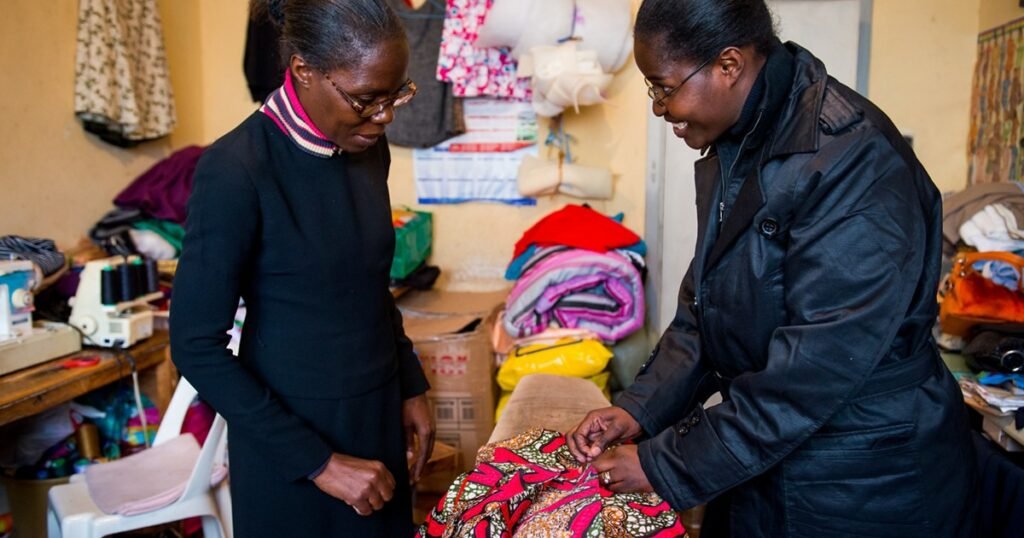More than half of the world’s workforce is self-employed. Recognizing the need to support these workers, policymakers and development agencies are spending more than $1 billion a year on training existing and potential small-scale entrepreneurs.
Yet, despite the money spent, many business owners are dealing with deep-rooted challenges such as low productivity, low profits and low revenue.
Addressing these challenges raises questions such as: What program designs can most effectively support entrepreneurs? How can we reach all small entrepreneurs, including women and self-sufficient entrepreneurs? How can entrepreneurs acquire the skills to run successful businesses and enter new markets and high-profit sectors?
The World Bank and J-PAL’s Employment Opportunities Initiative (JOI) are helping to answer these questions by supporting research at the forefront of entrepreneurship and job creation research. Here, we share what we’ve learned from research and a growing body of evidence on interventions to support small-scale entrepreneurs in low- and middle-income countries.
Programs that provide entrepreneurs with access to markets, access to capital, and business training have shown mixed results.
Helping firms access new markets can improve their performance. Examples include improving a firm’s ability to sell to foreign markets and multinational companies, strengthening physical and digital infrastructure, and removing information barriers. However, while these interventions are promising for large firms, there is limited evidence on how market access affects the growth of small firms.
At the same time, a series of randomized evaluations have shown that cash grants, microfinance, and business training programs can have positive effects on firm outcomes such as profits and growth, but that their effects are not consistently transformative on average.
Variability in the impact of interventions may result from differences in design and implementation.
For example, traditional microfinance has had a limited impact on business growth, while more promising approaches include modifying financial products such as providing flexibility and grace periods on loan repayments, as well as leveraging asset-based microequity approaches.Training programs with a focus on soft skills have also been shown to have a greater impact than traditional classroom-based business training, which typically focuses on hard skills.
Entrepreneurial capacity can also influence outcomes. For example, the J-PAL study in Hyderabad, India, found that only entrepreneurs with previous experience running a business achieved higher profits after using microfinance. Targeting this subset of entrepreneurs with higher growth capacity, as suggested by various randomized evaluations, seems promising for increasing the impact of entrepreneurship support programs.
Policymakers face a trade-off between allocating resources to high-potential entrepreneurs and promoting inclusiveness.
On the one hand, policymakers can choose to allocate resources to support high-capacity entrepreneurs, but this approach may leave behind or disadvantage self-sufficient entrepreneurs. Alternatively, policymakers can prioritize inclusiveness by extending support to all types of entrepreneurs. However, this more inclusive approach may lead to inefficient allocation of resources at the market level, stifling potentially impactful enterprises. Ultimately, policymakers should choose their approach based on their goals or leverage different instruments for different purposes.
Policymakers should consider the context and implementation of entrepreneurship support programs
Results from a single randomized evaluation do not serve as a comprehensive model to inform programming in different cultural or social contexts. Context-specific considerations are necessary to optimize the effectiveness of support programs. For example, culture and social norms may reduce the effectiveness of cash grants or microfinance for women entrepreneurs in certain regions because in some areas women may share funds with other household members. In these cases, ensuring the distribution of digital capital to accounts held personally by women ensures that resources are directed to their businesses. In other cases, the quality of implementing partners and trainers can make a big difference in the impact of a program.
Future issues for research on entrepreneurial support programs
We need to better understand the following: What are the best options for identifying high-potential entrepreneurs in a predictable and scalable way? How can microfinance and business training programs better meet the needs of microentrepreneurs? Which alternative training programs are most effective at driving improved business performance, and why? What are the key regional constraints that are preventing microentrepreneurs from unlocking demand and growth?
Learn more about how J-PAL can help you find answers to these open questions at the World Bank and the Job Opportunity Initiative (JOI). We work to help policymakers better support small entrepreneurs around the world.
This blog is based on the February 2024 edition of the Knowledge4Jobs newsletter, compiled by the World Bank Jobs Group and the Workforce Skills Global Solutions Group. Click here Subscribe to the Knowledge4Jobs newsletter.

